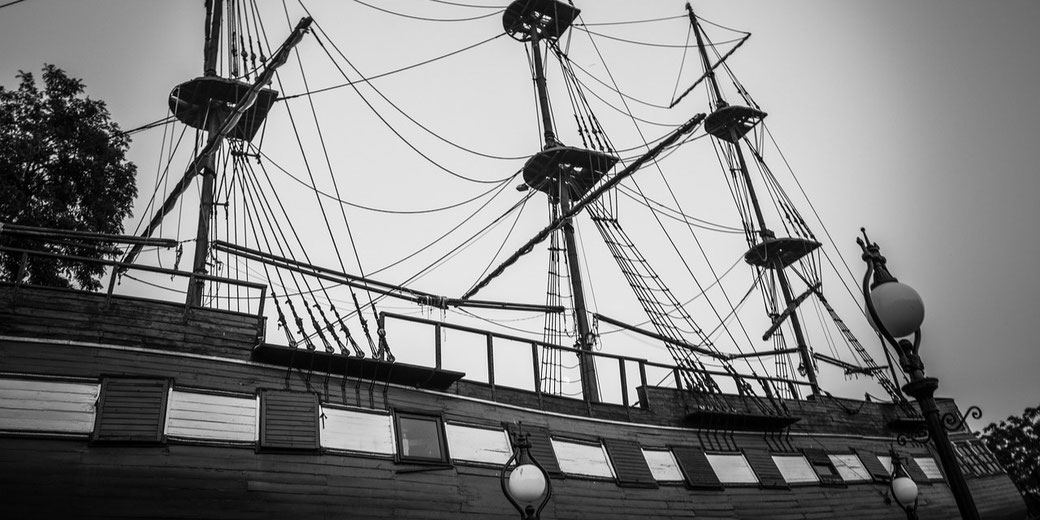The Zong: The worst slave ship in history?

The story of the Zong is a harrowing reminder of the atrocities that took place during the transatlantic slave trade. It's a story of greed, cruelty, and disregard for human life.
The Zong was a British slave ship that set sail in 1781, carrying more than 400 enslaved Africans from the Gold Coast of West Africa to the Caribbean.
But what was already a terrible voyage turned into an even more brutal nightmare when the ship ran low on water and supplies.
In a shocking act of inhumanity, the crew decided to throw overboard more than 130 sick and weak enslaved Africans, claiming that they were nothing more than cargo.
This tragedy sparked outrage and played a significant role in the fight against the slave trade.
What was the Zong?
The Zong was a British slave ship that had originally been built in the Netherlands but was captured by the British and was operated out of Liverpool, England in 1777.
It was a typical ship of its time, designed to transport enslaved Africans from Africa to the Americas, where they would be sold into slavery.
The ship was owned by a consortium of Liverpool merchants, who had invested in the slave trade as a lucrative business venture.
Prior to the horrific events that took place during its 1781 voyage, the Zong had made a small number of successful slave trading voyages.
However, the Zong's infamous journey in 1781, during which more than 130 enslaved Africans were thrown overboard, has become its most well-known and defining historical event.
The massacre
The Zong set sail from Accra, on the Gold Coast of West Africa, in August 1781. The ship was carrying more than 400 enslaved Africans, who were to be sold in the Caribbean.
The journey was expected to take several months, and during that time, the crew would have to keep the slaves alive and healthy.
But things did not go according to plan. The ship encountered bad weather and ran low on water and supplies.
The crew realized that they would not have enough food and water to sustain themselves and the slaves for the duration of the journey.
They faced a difficult decision: either reduce the number of people on board or risk everyone dying of starvation and thirst.
In a cruel and callous move, the crew decided to jettison the sick and weak slaves overboard.
They believed that the slaves were nothing more than cargo, and that they could claim compensation for their loss from the ship's owners.
Over the course of several days, more than 130 slaves were thrown overboard. They were chained together and thrown into the ocean, where they drowned or were eaten by sharks.
Some of the slaves tried to resist, but they were beaten and thrown overboard anyway.
The captain of the ship, Luke Collingwood, later claimed that the slaves had been thrown overboard because they were sick and likely to die anyway.
But it was clear to many people that this was a lie. The slaves had been thrown overboard to save the crew's lives and to increase the profit that the ship's owners would make from the sale of the remaining slaves.

The court case which followed
The court case that followed the Zong's journey was a landmark case in the fight against the slave trade in Britain.
It was brought before the court in London in 1783, two years after the ship's voyage, and attracted a great deal of public attention.
The case was brought by the ship's owners, who were seeking compensation for the loss of their "cargo" - the enslaved Africans who had been thrown overboard.
The owners argued that the slaves had been jettisoned because they were sick and dying, and that they had been acting in the best interests of the other slaves on board and to preserve the lives of the crew.
However, the abolitionist movement and other opponents of the slave trade saw the case as an opportunity to challenge the brutal and inhumane treatment of enslaved Africans during the transatlantic slave trade.
They argued that the slaves had been thrown overboard in order to save the crew's lives and increase the profits of the ship's owners.
The trial judge, Lord Chief Justice Mansfield, heard evidence from both sides of the case and ultimately ruled against the ship's owners.
He concluded that the enslaved Africans had been murdered, not lost at sea, and that the owners were not entitled to any compensation for their deaths.
Long-term significance
The Zong case helped to galvanize the abolitionist movement in Britain and was a significant milestone in the campaign to end the slave trade.
It highlighted the brutal reality of the transatlantic slave trade and sparked public outrage and demand for change.
The case was a turning point in the history of the abolitionist movement, and it paved the way for the eventual passage of the Abolition of the Slave Trade Act in 1807, which abolished the slave trade throughout the British Empire.
Today, the Zong is remembered as one of the darkest moments in the history of the transatlantic slave trade.
It serves as a powerful reminder of the need to confront the legacy of slavery and to continue to fight against all forms of discrimination and inequality.
What do you need help with?
Download ready-to-use digital learning resources
Copyright © History Skills 2014-2024.
Contact via email
With the exception of links to external sites, some historical sources and extracts from specific publications, all content on this website is copyrighted by History Skills. This content may not be copied, republished or redistributed without written permission from the website creator. Please use the Contact page to obtain relevant permission.





